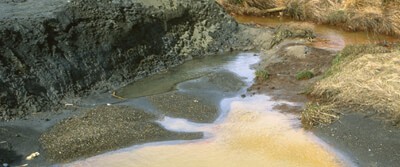Flint Signals the Dangers of Lead Contamination

By Mike Howie
In 2014, the city of Flint, Michigan stopped getting its water from Lake Huron (via the Detroit Water Department or DMD) and started using water from the Flint River — a source that was known to be of poor quality. Shortly after the switch, the city announced that the water contained bacteria and other contaminants, and several “boil orders” were issued. But in the months that followed, as scientists and reporters uncovered the true severity of the situation, national headlines sounded their alarm: Flint’s water also contained elevated levels of lead, a toxic heavy metal.
Something in the Water
In February of 2015, the Environmental Protection Agency (EPA) detected 104 parts per billion (ppb) of lead in the tap water at the home of Flint resident Lee-Anne Walters. That level was nearly seven times greater than the EPA limit of 15 ppb, and that was just the beginning. Later, scientists from Virginia Tech tested tap water from Walters’ home and detected lead levels as high as 13,200 ppb and, in September of that year, the Virginia Tech team estimated elevated lead levels in the water delivered to 40 percent of Flint homes.
At the height of the crisis, Flint residents were forced to rely on bottled water for drinking and cooking.
The situation has since improved: Flint once again supplies water from Lake Huron through the DMD and the EPA has granted the city $100 million in assistance to upgrade its drinking water infrastructure. The state of Michigan is also now required to replace lead and galvanized steel water lines connected to 18,000 Flint households, a project that probably won’t be completed until 2020.
So how did the situation become so dire? A main factor was the poor condition of water in the Flint River. In September 2015, the Virginia Tech team concluded that the water was 19 times more corrosive than the water in Detroit. The Flint Water Treatment Plant had made no provisions for corrosion control, and, over time, the corrosive water leached lead from the aging pipes around the city, including those in residents’ homes.
An Invisible Threat
People initially complained about the water’s abnormal color and bad taste, but not about lead, which is colorless and odorless in water. Lead has no natural purpose in the human body and its accumulation can lead to a variety of health issues, especially in babies and young children. Lead poisoning in children can cause neurological problems, and childhood lead poisoning can lead to issues for adults like renal effects, hypertension, reproductive problems, and developmental problems in offspring.
While the case in Flint was especially bad, lead contamination can occur anywhere that corrosive water flows through lead pipes, fittings or faucets before being consumed. Although lead components aren’t used in modern plumbing systems, they may still be found in older systems.
Avoiding exposure to lead is the best way to prevent lead poisoning, and there are a few ways to determine whether or not the water in your home is contaminated. First, check the EPA’s Consumer Confidence Reports for information about lead levels in water in your area — they’re available on the EPA’s website (epa.gov/ccr) and a copy is mailed to water customers every year. Second, test the water in your home. Some water-supply companies offer free lead testing, but you can test your own water by purchasing a lead test kit and sending the water sample to an EPA-certified lab.
As an extra precaution, purchase a water filter for your home. Look for one made to reduce lead content and certified by either NSF International or the Water Quality Association, and use it to filter the water you use for drinking and cooking.
Discussion Questions
- What could have been done to prevent the widespread lead contamination in Flint?
- How can you make sure that the water you consume is safe?
- Corrode
- EPA
- pH